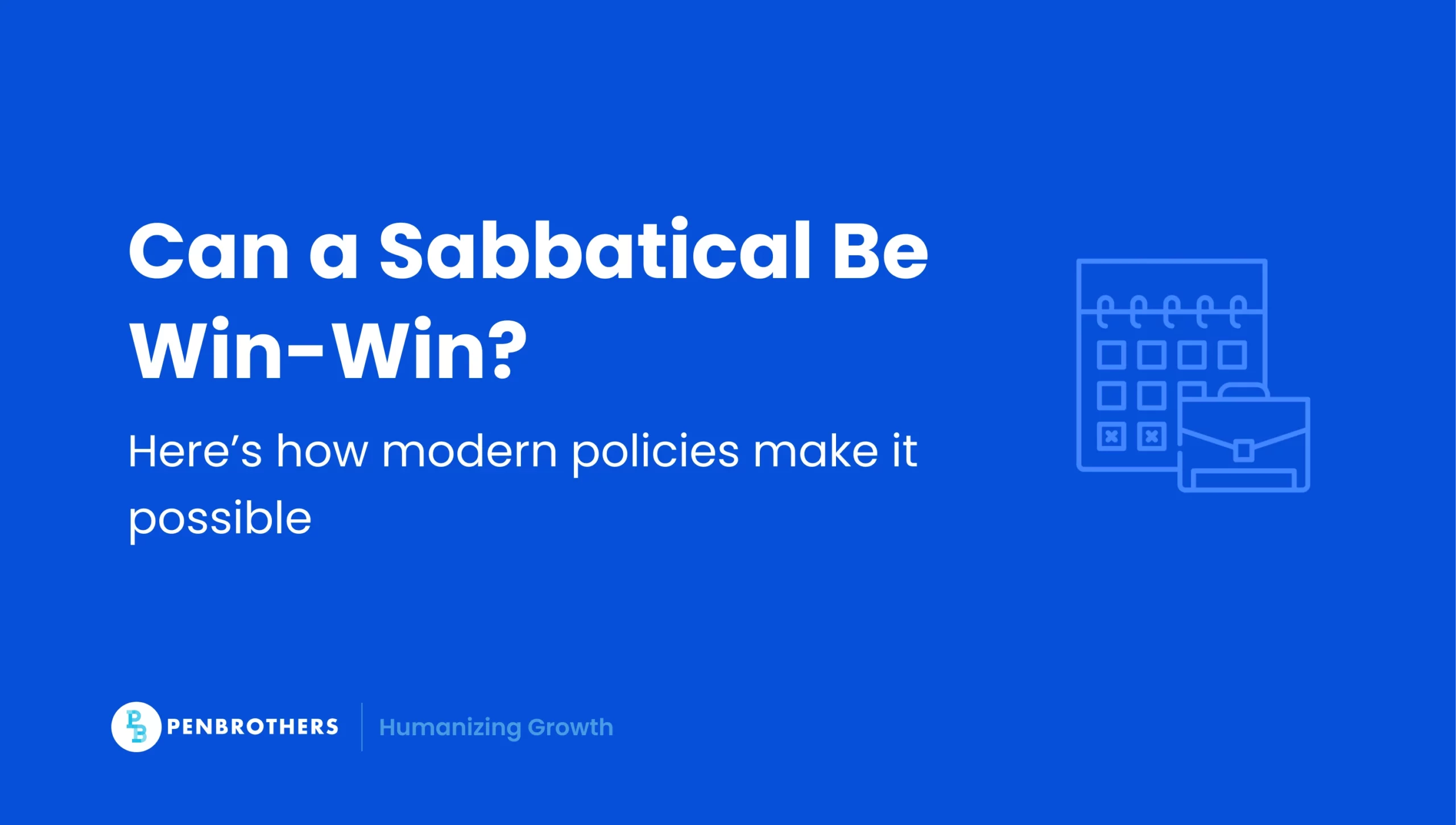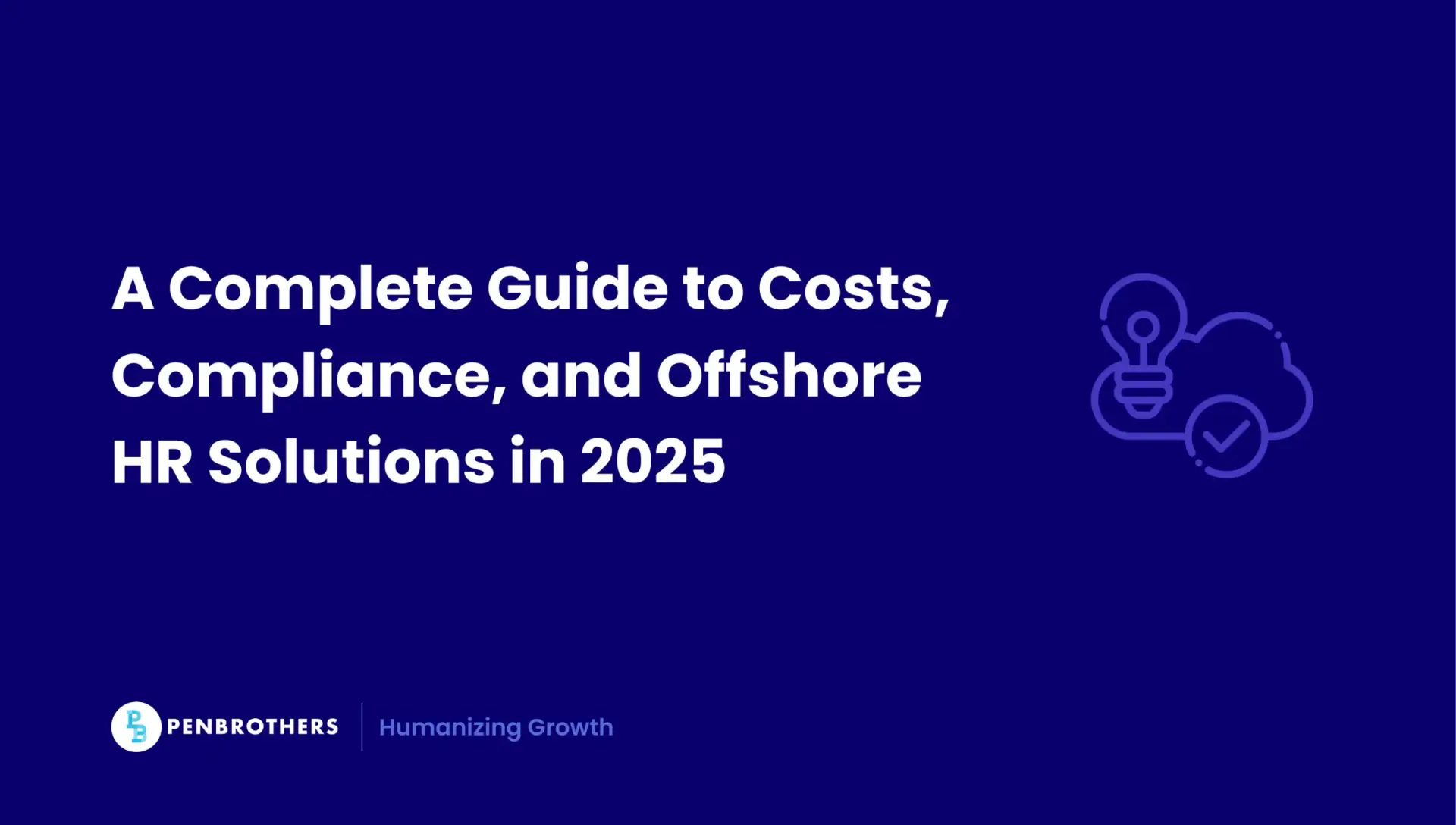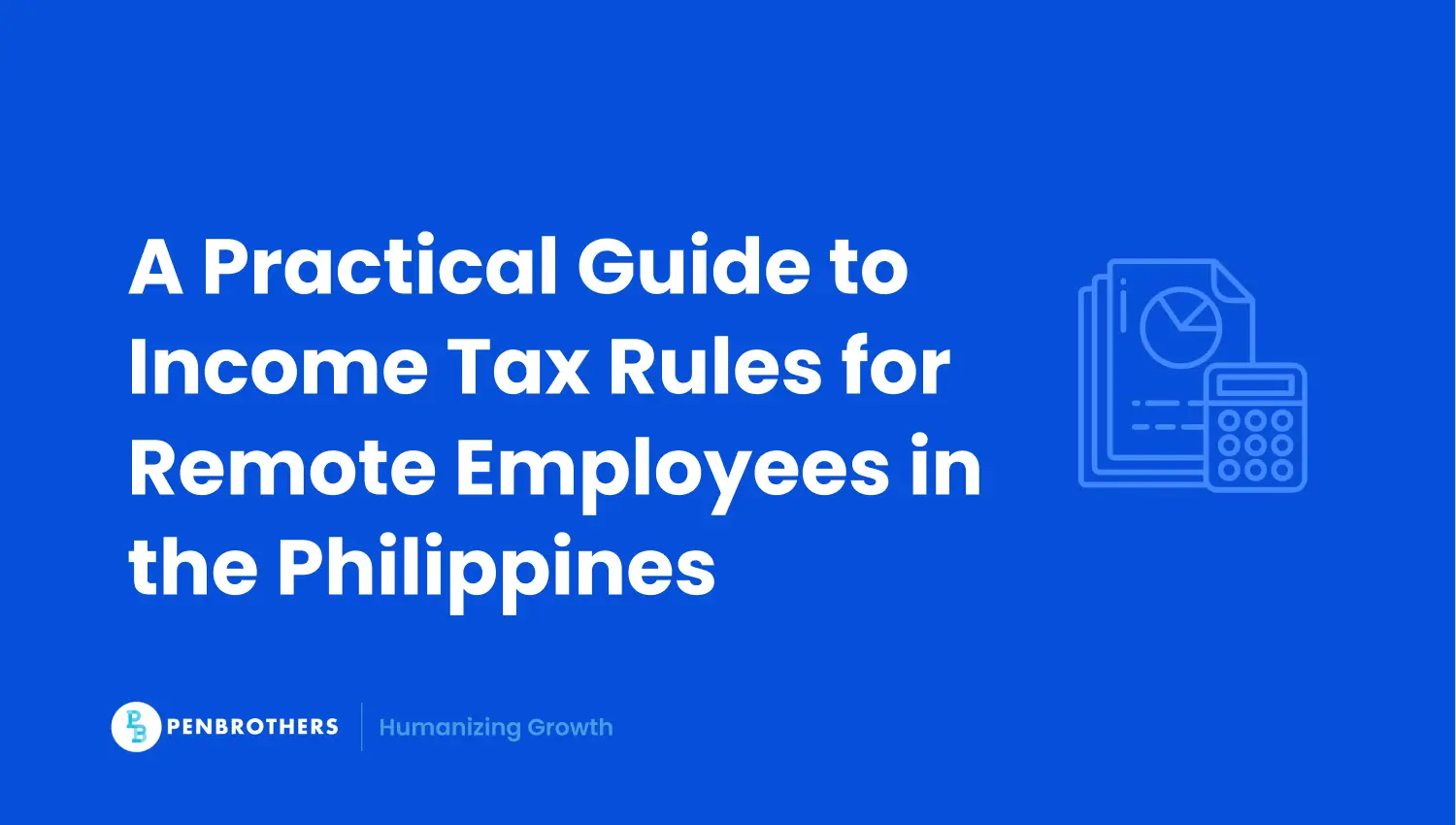What's Inside?
Sabbatical Leave Guide: What Employers Must Include in Their Policies

Traditional sabbatical policies were designed for academic institutions and legacy corporations. But in a distributed, digital-first workforce, a rigid policy doesn’t align with how modern teams work. For hiring managers building global remote teams, sabbaticals shouldn’t just be viewed as perks. When designed strategically, they become powerful levers for preventing burnout, increasing retention, and developing internal leaders. This guide offers a new framework for building a location-flexible, high-impact sabbatical leave policy that actually works for your team.
Key Takeaways
- A Strategic Tool for Retention and Preventing Burnout: Sabbatical leave has evolved from a simple academic perk into a strategic tool for modern, global businesses. When designed correctly, it serves as a powerful lever for preventing employee burnout, increasing long-term retention, and developing internal leaders.
- Modern Policies Should Prioritize Flexibility: Traditional, tenure-based sabbatical policies are often out of step with today’s agile and remote teams. Modern policies are more effective when they are flexible, offering options like project milestone-based leave, a credit system for earning time off, or both structured (for learning) and unstructured (for rest) leave.
- Must Be Implemented Equitably for Global Teams: When managing a global or remote workforce, it is critical to offer sabbatical policies equitably. This means avoiding “HQ-only” perks and working with local HR or EOR partners to ensure the policy is aligned with regional cultural expectations and labor laws, such as in the Philippines.
- Success Depends on Planning for Both Departure and Return: A successful sabbatical program requires a clear plan for workflow coverage (like cross-training and temporary leads) to prevent burdening the rest of the team. It also requires a structured re-entry process for the returning employee to help them reintegrate and share what they learned.
Sabbatical Leave: The Foundational Questions
Before rethinking the policy, it’s essential to establish the fundamentals. Many high-intent search queries focus on the basic definitions of sabbatical leave. Answering them directly builds authority and satisfies user intent immediately.
What does sabbatical leave mean?
A sabbatical leave is an extended break from work, traditionally offered to employees after a set number of years of service. Unlike a standard vacation, its purpose is not just for a short-term rest but for a significant period of personal or professional growth, rejuvenation, or to pursue a specific goal.
Is sabbatical leave paid or unpaid?
This depends entirely on the employer’s policy. There is no single legal standard. Sabbatical pay structures can include:
- Fully Paid: Often reserved for top-tier employees or those pursuing company-sponsored research.
- Partially Paid: The most common model, where an employee might receive 50-80% of their salary.
- Unpaid: The company guarantees the employee’s job (or a similar one) will be available upon their return, but the leave itself is not compensated.
Is a sabbatical the same as PTO?
No. Sabbatical leave is structurally different from PTO (Paid Time Off) or annual leave.
- PTO/Annual Leave is for short-term rest, is earned (accrued) regularly, and is used for vacations, sick days, and personal time.
- Sabbatical Leave is a long-term, extended break (typically four weeks to six months) that is granted as a separate, long-service benefit. It is not part of the standard PTO bank.
Can an employer refuse a sabbatical?
Yes. In most countries, including the United States, sabbatical leave is a discretionary benefit, not a legal entitlement. An employer can refuse a sabbatical request for various reasons, including:
- It does not align with business needs or project timelines.
- The employee does not meet the eligibility criteria (e.t., years of service).
- The requested coverage plan is insufficient.
This is why having a clear, transparent, and equitable policy—as outlined in the rest of this guide—is critical.
What Most Guides Don’t Tell You About Sabbatical Leave
Most content on sabbaticals presents the basics, including definitions, examples, and standard eligibility. What they often miss:
- Sabbaticals are underutilized. Employees fear taking one will derail their career or burden their peers.
- Equity blind spots exist. Offering sabbaticals only in HQ locations creates a two-tier benefits culture.
- Sabbaticals often misalign with work rhythms. Companies forget to build space for them in planning cycles, leading to delays and resentment.
Are You Accidentally Gatekeeping Sabbaticals?
Without realizing it, your company might make sabbaticals feel out of reach. Some subtle blockers include:
- Eligibility by trust, not policy. Senior staff feel safe to request leave, junior staff don’t.
- Unclear handoff plans. Workloads are dumped on the team, fostering resentment.
- Fear-based culture. Employees think sabbaticals signal disengagement or risk.
Solution: Make eligibility transparent, normalize sabbaticals early, and support both the leave-taker and the team.
Designing Sabbaticals That Fit Remote, Project-Based Teams
Tenure-based sabbaticals are out of step with today’s agile teams. Instead, consider:
- Project milestone sabbaticals. Offer time off after major product launches or sprints.
- Sabbatical credit systems. Let employees accumulate sabbatical days through performance or impact.
- Calendar-integrated planning. Align sabbatical scheduling with quarterly or annual goals using team planning tools.
Global Compliance Isn’t Just Legal. It’s Cultural.
Sabbatical policies need to adapt to regional expectations. For example:
- In the Philippines, long-term leave is rare; aligning sabbaticals with SL/VL policies or rest days creates consistency.
- In Germany, employees expect structured leave policies tied to mental health or training.
- Solution: Work with your EOR or HR provider to ensure location-sensitive equity.
Offering sabbaticals globally doesn’t mean uniformity. It means thoughtful parity.
Should You Require a ‘Purpose’ for a Sabbatical?
While some companies require sabbatical proposals tied to learning or volunteerism, this can backfire:
- It excludes neurodivergent, caregiving, or trauma-impacted employees.
- Rest is a valid reason. Don’t penalize those who need unstructured time.
Instead, offer:
- Structured sabbaticals (e.g., for research or training)
- Unstructured sabbaticals (e.g., rest, healing, personal reset)
Both can generate meaningful returns.
Managing Workflow Around Sabbaticals Without Burning Out the Team
Sabbaticals shouldn’t come at the cost of team morale. To avoid that:
- Cross-train before taking a leave. Use job shadowing to build redundancy.
- Assign temporary leads. Offer stretch roles to junior staff to reduce hiring.
- Create async coverage maps. Use project management tools to visualize responsibilities.
Planning the sabbatical is a leadership development opportunity for the entire team.
Tracking Sabbatical ROI Beyond Feel-Good Stories
Measure the actual impact of sabbaticals using:
- Retention rates post-sabbatical
- Promotion or role changes after return
- Self-reported well-being and productivity
- Manager’s feedback on reintegration
Use sabbatical returns as a launchpad for internal mobility or deeper career conversations.
The Hidden Benefits You Can Unlock With Strategic Sabbaticals
When integrated well, sabbaticals produce:
- Innovation. Employees return with fresh perspectives or new product ideas.
- Workforce resilience. Teams learn to thrive without single points of failure.
- Reduced presenteeism. People stop “quiet quitting” when real rest is an option.
- Succession planning insights. Temporary gaps help reveal who’s ready to lead.
Sabbatical Policy Template Reimagined for Remote Teams
Here’s a flexible framework:
- Eligibility: Project-completion-based or tenure-based, with performance criteria
- Duration: 1-3 months, with optional phased return
- Compensation: Full, partial, or unpaid, depending on impact level
- Coverage Plan: Shadowing, async documentation, transition checklist
- Purpose: Optional. Can be rest, caregiving, volunteering, or professional development
- Reentry: Re-onboarding, reflection session, and personal growth roadmap
Launching and Scaling Your Sabbatical Program
- Start with a pilot team and run a mock sabbatical.
- Collect feedback anonymously to improve the policy.
- Build sabbatical literacy into onboarding.
- Normalize it in team rituals (planning, 1:1s, growth talks).
- Reinforce it with internal stories. Celebrate sabbatical learnings.
Conclusion: It’s Not Just a Perk. It’s a Signal.
Offering sabbatical leave shows your team you’re serious about long-term retention, wellness, and growth. It sends a message: “You matter, and we want you here for the long haul.” But a sabbatical policy only works when it’s designed for the real way your team works. Build it to be flexible, inclusive, and embedded into your operating model, not just your handbook.
Frequently Asked Questions
No. In most countries, including the United States and the Philippines, sabbatical leave is a discretionary benefit, not a legal entitlement. This means an employer can choose whether or not to offer it and can also refuse a request based on business needs.
PTO (or annual/vacation leave) is for short-term rest, is accrued regularly as part of standard compensation, and is used for vacations or personal days. A sabbatical is a much longer, extended break from work (typically four weeks to six months) that is granted as a separate, long-service benefit for the purpose of rest, rejuvenation, or growth.
This depends entirely on the company’s policy. A sabbatical can be fully paid, partially paid (e.g., 50% of salary), or unpaid, with the company’s only obligation being to guarantee the employee’s job upon their return.
This also depends on the company’s policy. While some traditional policies require a formal proposal, modern, flexible policies increasingly recognize that rest, healing, and “unstructured time” are valid and productive reasons for a sabbatical, just as much as professional development.
A successful sabbatical requires a proactive coverage plan. This includes having the departing employee document their processes, cross-train colleagues on their critical tasks well in advance, and assigning a temporary lead to manage responsibilities, which can also serve as a leadership development opportunity for junior staff.
*This article was crafted with the support of AI technology and refined by a human editor.





